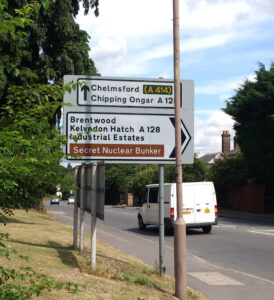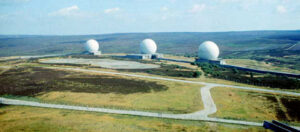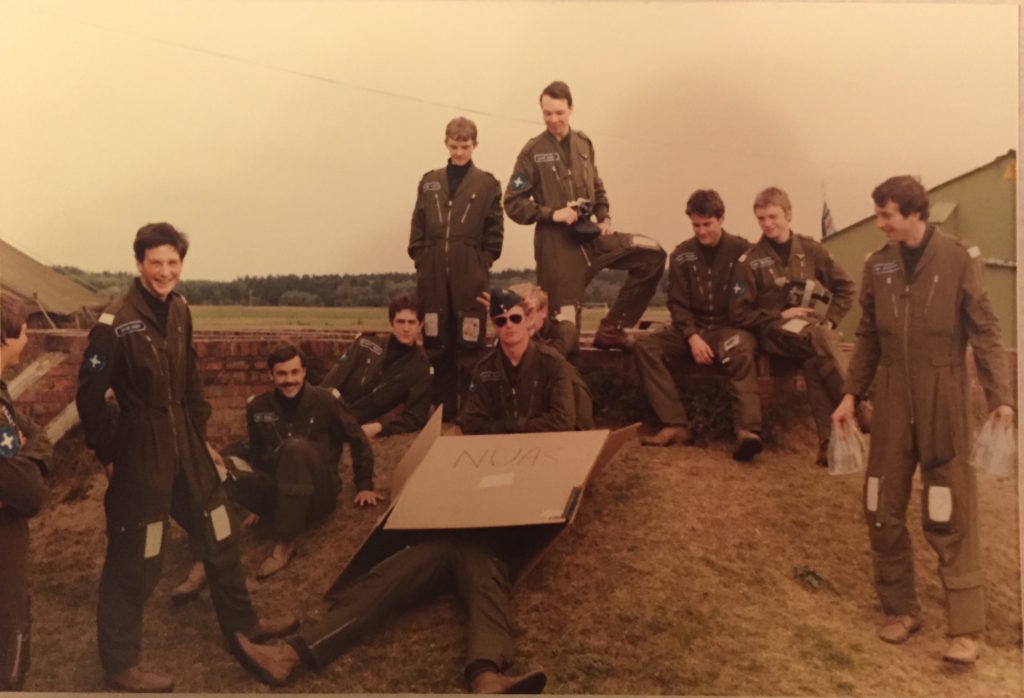A brief and personal history of the Cold War
Disarmament 1 February 2016
Introduction – How the Cold War Started
I was asked to write this piece to describe what the Cold War was like, from a participant’s perspective. Anyone alive living through the 50’s – 80s participated, whether they wanted to or not.
First, some context: By the end of the Second World War, nuclear weapons had been used in anger; the most terrorising weapons of all. In the west, allied armies, once united against the common enemy of fascist Germany glared across in Europe. The US / British team were not going away, no more than were Stalin’s Russians.
In 1946 Winston Churchill spoke of an Iron Curtain[1] descending over Europe, he described the Russian communist control over their neighbours (the Baltic states, Poland, Czechoslovakia, Romania, etc.). Germany was left divided, the American and British zones of Berlin were surrounded.
This resulted in massive demobilisation of the huge WWII armies and a return to smaller professionalised forces – particularly by the British and Americans, with nuclear weapons as their backstop deterrent. Attack us, and we’ll use the nukes.
The Arms Race, MAD and the calculus of Deterrent
Eventually the Russians also developed the technology to make and deliver nuclear weapons, In 1952. The space race – German V2 rocket[2] science[3], the foundation to launch Sputnik[4] and Yuri Gagarin[5] into orbit, and eventually put Americans on the moon – was really all about building inter-continental ballistic missiles: ICBMs[6]. Not just a few, but many – by the 1960s a chain of Minuteman and Peacekeeper missiles laced across the US prairies, and Russian R7 missiles across the steppes. Diversity came from American B52, Russian Tupolev, Ilyushin and British Vulcan bombers all adding to the numbers in the air, and shoals of nuclear missile submarines carrying yet more rockets under the seas.
The western allied powers created NATO[7] to counter the soviet bloc, where an attack on one is considered an attack on all. Now the doctrine was Mutually Assured Destruction: MAD. If you attack us, we’ll attack and obliterate you, too, based on the certainty that your ‘first strike’ can not possibly destroy all our land based, airborne and sea based weapons. You may destroy us, but you can’t stop us destroying you, too.
Cold War UK
The legacy of those days lives on. Deep in the Essex countryside there’s a Secret Nuclear Bunker.

These days it’s a well signposted museum[8], but in the 60’s and 70’s, places like that were where national and local government officials planned to hide, hopeful of surviving to govern what would be left. The population were to be instructed how to ‘Protect and Survive’[9], by a leaflet and public information broadcasts.
At the time, I was learning to fly with the RAF University Air Squadron and our Cold Wartime role was to provide local police and fire chiefs with light aircraft for observation and reconnaissance. Exercise Square Leg[10] sorties were hilarious – our instructors would take the police and firemen on flights to see their area from the air, supposedly to spot simulated mushroom clouds, whilst we stood in simulated shelters, bringing back full barf bags[11] on most occasions. We would entertain the Constabulary in the bar afterwards. More sobering: Square Leg assumed that over 50%, over half of the population, would not survive nuclear war.
A chain of massive radar sites were built all round the northern hemisphere. There is one on top of the North Yorkshire moors, at Fylingdales[12].

They’ve been replaced by new structures now but then, the ‘golf balls’ contained rotating radars intended to spot Russian missiles cresting the northern horizon. NATO would get about 5 minutes to initiate their response before the warheads arrived.
The Doomsday Clock and Anti Nuclear Protest
So how close to Armageddon did we get? Quite close: in 1947 the Bulletin of the Atomic Scientists[13] invented the Doomsday Clock. The closer the minute hand gets to midnight, the closer to nuclear obliteration the planet was. The scope is wider now (it now includes all man made impacts, including climate change). Two minutes was the closest in 1952 when both America and Russia were testing nuclear weapons, Russia having only just acquired the capability.
There were large-scale anti-nuclear weapon protests in the west. The Campaign for Nuclear Disarmament[14] is well known in the UK. Later, another campaign at RAF Greenham Common in Berkshire, which was used as a base for tactical nuclear cruise missiles. In 1981 a women’s peace camp[15] was established to oppose the basing of missiles there.
Détente Breaks Out
MAD by name, mad by nature, the building of more and ‘better’ weapons was clearly unsustainable. With enough capacity to destroy our planet many times over, governments on both sides saw the unsustainability of the continuing arms race. Whilst anti ballistic missile weapons[16] were restricted (if we can shoot yours down and survive, we can strike you unopposed…) there were negotiations and treaties signed. Strategic Arms Limitations Talks (SALT 1[17], SALT2[18]), where the numbers of ICBMs and their multiple independent re-entry vehicles (the sinister sounding MIRVs) were to be capped, followed by Strategic Arms Reduction Talks (START)[19], focussed on reducing numbers of intermediate range weapons, with satellites used to verify dismantling.
A global nuclear weapons test ban implemented and nuclear proliferation treaties were signed. But testing and proliferation continues, by non-signatories. The list of nations estimated to have nuclear weapons is long[20], the newest: North Korea.
It has not always been so tense – the Doomsday clock wound back to 17 minutes to midnight for a while, when détente broke out. Convinced he had the technology, US President Ronald Regan started to invest in the Strategic Defense Initiative (SDI)[21], popularly known as ‘Star Wars’. The plan was to create space based weapons that could destroy Soviet missiles in their sub orbital, pre MIRV flight phase. Arguments about the breach of the Anti Ballistic Missile Treaties raged, but the genie was out of the bottle. Soviet leader Mikhail Gorbachev had neither the technology, resources nor inclination to counter SDI. Indeed his agenda was moving in exactly the opposite direction: Glasnost (openness) and Perestroika (listening, restructuring) were his focus. Democracy broke out across Eastern Europe. The union Solidarity[22] rose from the Polish shipyards, managing to force out the communist leadership there, the Velvet Revolution[23] took hold in Czechoslovakia, the Berlin wall came down and Germany re-united[24]. 1989 was a very big year. There’s a brilliant video here (only 3 minutes): http://www.history.com/topics/cold-war/perestroika-and-glasnost
Feel the Heat
One big risk in the 1990s was the fate of Soviet nuclear warheads, many by then outside the physical or political control of Russia – and the potential for them to fall into terrorist hands, as either viable nuclear or ‘dirty’[25] bombs.
The Cold War was not all that cold, either. Whilst MAD may have discouraged all parties from nuclear conflict, millions have died in so-called proxy conflicts from Korea to Somalia, from Afghanistan to Vietnam. All hot wars. All politically, ideologically (and now theologically) fuelled madness.
Cold war Q&A
What did we do to survive in the Cold War? We tried not to think about it too much. Having a Sword of Damocles over one’s head is not good for the digestion.
Were there any winners in the Cold War? I don’t think so. It’s a bit like stalemate in chess, there has been no decisive or successful outcome for either side, and it was a monumental waste of money for both sides.
Was MAD bonkers? Clearly. Having said that, rational politicians on all sides have refrained from using nuclear weapons again, so far.
Is the Cold War over? No. Does anyone have the right time? Three minutes to midnight[26]. Thank you.
Will MAD continue to work? Possibly. Given it is unlikely that complete multilateral disarmament will occur anytime soon, it better had. The risk that irrational rogue state leaders with nuclear weapons thinking they can win a nuclear exchange (thus accidentally destroying our planet), is the thing we should worry about most.
Are there too many links to ‘western capitalist’ sites in the notes? Yes, because I don’t speak Russian (or Chinese). I’d love to hear the story from the (former) communist side. In the meantime, here’s a link to another. It’s an interview with Natalia, widow of Alexander Solzhenitsyn[27] (a Russian cold war dissenter who spent decades in the gulags – ‘One Day In The Life Of Ivan Denisovich’ is still one of the best books I’ve ever read), who has a very Russian perspective on the current increasing tensions between the west and Vladimir Putin’s Russia.
(Her point: the west has as much responsibility as the Russians for fuelling the currently increasing tensions.)
Long may stalemate persist.
Written by Colin Harper

[1] https://www.nationalchurchillmuseum.org/sinews-of-peace-history.html
[2] https://en.wikipedia.org/wiki/V-2_rocket
[3] https://en.wikipedia.org/wiki/Wernher_von_Braun
[4] http://news.bbc.co.uk/onthisday/hi/dates/stories/october/4/newsid_2685000/2685115.stm
[5] https://en.wikipedia.org/wiki/Yuri_Gagarin
[6] https://en.wikipedia.org/wiki/Intercontinental_ballistic_missile
[7] http://www.nato.int/history/nato-history.html
[8] http://www.secretnuclearbunker.com/index.php
[9] http://www.nationalarchives.gov.uk/films/1964to1979/filmpage_warnings.htm
[10] https://en.wikipedia.org/wiki/Square_Leg
[11] Would you like to try some aerobatics on the trip home? You would? Good. HASELL checks complete, here we go…
[12] http://www.raf.mod.uk/raffylingdales/aboutus/history.cfm
[15] http://www.greenhamwpc.org.uk/
[16] https://www.armscontrol.org/factsheets/abmtreaty
[17] https://history.state.gov/milestones/1969-1976/salt
[18] https://history.state.gov/milestones/1977-1980/horn-of-africa . SALT 2 was never ratified.
[19] https://history.state.gov/milestones/1989-1992/strategic-arms-reduction
[20] http://www.armscontrol.org/factsheets/Nuclearweaponswhohaswhat
[21] https://history.state.gov/milestones/1981-1988/u.s.-soviet-relations
[22] https://en.wikipedia.org/wiki/Solidarity_(Polish_trade_union)
[23] http://www.bbc.co.uk/news/world-europe-30059011
[24] https://en.wikipedia.org/wiki/German_reunification
[25] https://en.wikipedia.org/wiki/Dirty_bomb
[26] The scope of the Doomsday clock now includes other man-made impacts such as a climate change
[27] https://en.wikipedia.org/wiki/Aleksandr_Solzhenitsyn


Excellent article! So much I did not know before.
Not a great deal to add, but the movie “My Perestroika” has about five or six minutes where a few people still living in Russia say something along the lines of: ‘we lived in constant fear that any day the wicked capitalists in America were going to bomb the s**t out of us’. These people were kids at the time, and they also say that they were so happy to be living in the USSR because they were afraid of all the protests in capitalist countries that they saw on TV.
So the feelings of fear of war and distrust seems similar to how you describe it here.
A really interesting read! I also find it interesting how the Cold War tensions (and distrust) filtered to civilian nuclear developments in “neutral” countries. The first Finnish reactor for instance was ordered from the Soviet Union in the 1970s. The Soviet designs were elementary and basic compared to others such as UKAEA or Western German (all too controversial!) propositions. Nonetheless, the State decided to go with the Soviet design to prove the country wasn’t leaning too much to the West. Three other reactors were ordered later: one from the Soviets and two from Sweden, perhaps following similar lines of reasoning – not to come across as a Soviet satellite either.
On the other hand, spent fuel from those Soviet designed reactors was transported to the Soviet Union for reprocessing up until 1994. While the Finns avoided asking questions about what happened to it (and thus avoiding responsibility for the waste in general), it probably isn’t too far fetched to speculate that the reactors fuelled Soviet military ambitions to some extent. So perhaps, stretching Colin’s question on whether there were any winners in the Cold War, one could say sure: Posiva (the Finnish WMO) – for the Finnish waste inventory is smaller than it would have been without Soviet involvement in the Finnish nuclear industry.
Thanks for the comments – good to see that people were reading the article – which we thought might be too long. I’ll definitely check out ‘My Perestroika’. It seems the leadership on both sides told their populations exactly the same things, which is appalling.
I’m not so sure about the waste advantage. That seems a zero sum game to me, and maybe the Finns are simply putting their heads in the sand. I can remember the uproar in the North of England, when Windscale (now called Sellafield) started to import nuclear waste from France and further afield. There are people hereabouts who know a lot more than me about managing nuclear waste, but wherever it is, if it escapes into the water cycle or atmosphere, borders will become irrelevant. Are we sure that Russians are careful with their waste? In the arctic? Hmm…